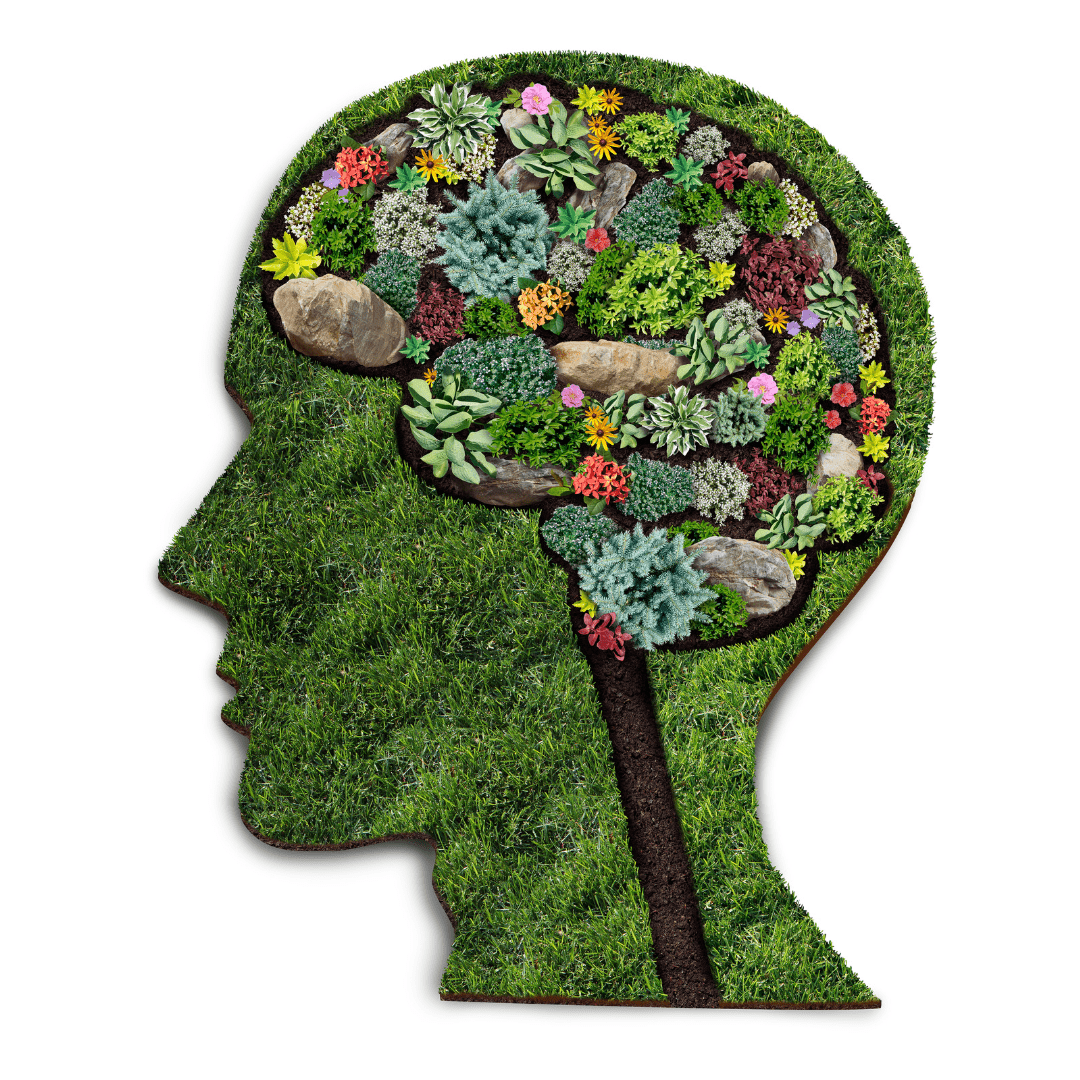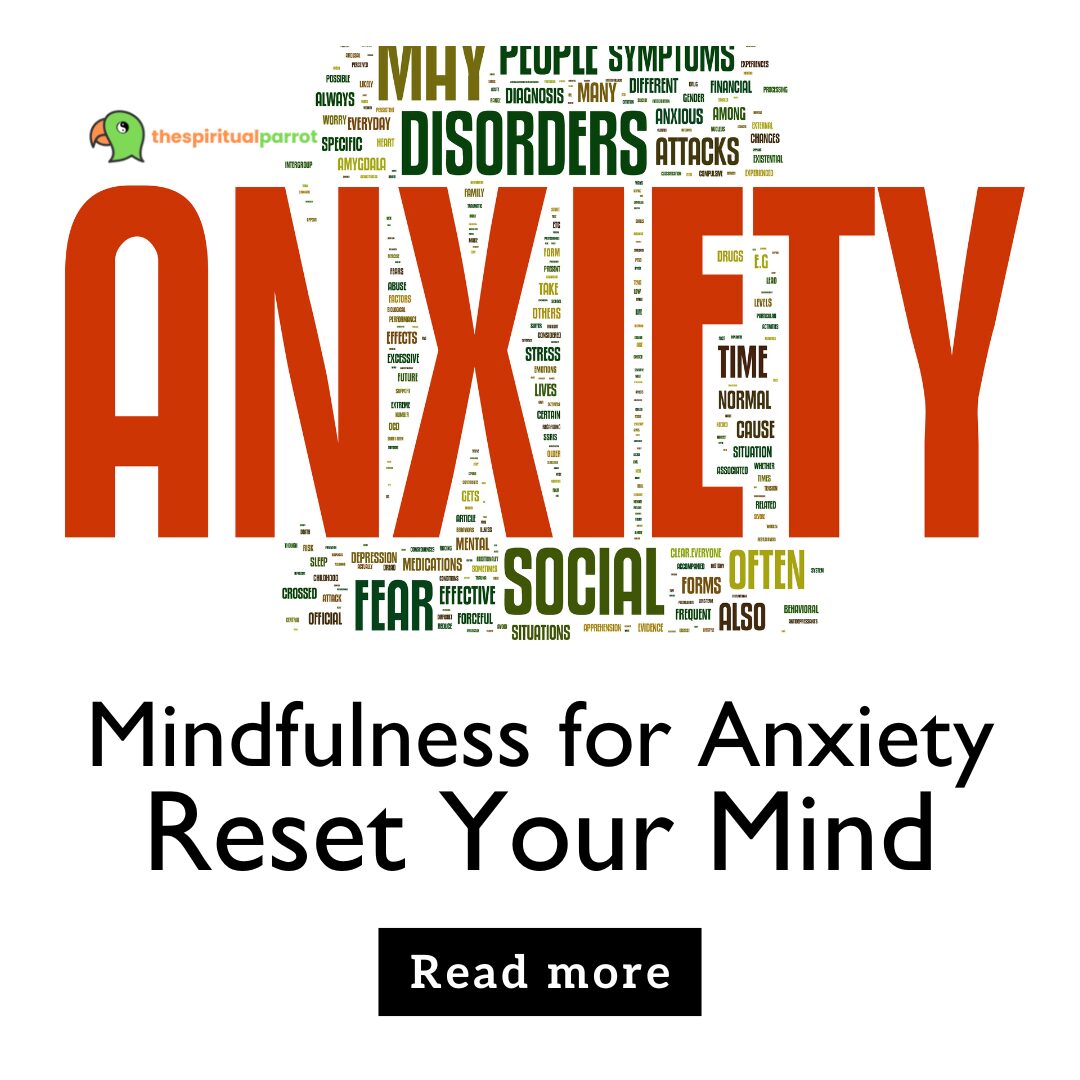In the bustling world of academia, where deadlines and exams rule the roost, it’s all too easy for students to lose sight of the present moment. Their minds are often elsewhere—dwelling on the past, fretting about the future, and barely touching base with the now. This lack of presence can lead to stress, anxiety, and reduced academic performance. But what if there was a way to anchor students in the present, enhancing their focus, well-being, and academic prowess? Enter mindfulness, a practice that is gaining recognition for its numerous benefits, particularly within the realm of education.
Our exploration in this blog post will delve into various mindfulness activities specifically tailored for students. We’ll uncover techniques ranging from breathing exercises and guided meditation to mindful studying habits and technology use. Additionally, we’ll discuss how these activities can be seamlessly incorporated into school settings, fostering an environment that promotes mental well-being alongside academic growth. Whether you’re a student, teacher, or parent, these mindfulness practices hold the potential to transform the educational experience, cultivating a sense of calm and focus amidst the hustle and bustle of student life.
Join us on this journey as we unveil the power of mindfulness for students, spotlighting the practices that can foster a balanced and productive academic life.
Introduction
The Crucial Role of Mindfulness Activities for Students
In an increasingly fast-paced world, students often find themselves battling stress and anxiety. Amidst the whirlwind of academic pressure, extracurricular activities, and social interactions, it’s easy to overlook the importance of mental well-being. This is where mindfulness activities come into play. Mindfulness, in its simplest form, is the practice of being fully present and engaged at the moment. For students, these activities can serve as a soothing balm to the chaos of their everyday life, offering a sanctuary of calm and focus.
Unveiling the Benefits of Incorporating Mindfulness Activities into Student Life
Infusing mindfulness activities into a student’s daily routine offers a myriad of benefits. These benefits are not just confined to their mental and emotional well-being but also extend to their academic performance and overall growth. To begin with, mindfulness helps in enhancing focus and attention span. It trains the brain to concentrate on the task at hand, thereby leading to improved productivity and academic performance.
Moreover, it fosters emotional resilience, enabling students to better handle stress and pressure. It equips them with the ability to manage their emotions effectively and respond, rather than react, to challenging situations. This growth in emotional intelligence aids in the development of healthier relationships and social interactions.
Another significant advantage is the cultivation of a positive mindset. Mindfulness activities promote gratitude and appreciation for the present moment, curbing negative thoughts and fostering happiness and satisfaction. As a result, students can navigate their personal and academic lives with a more positive and balanced outlook.
Finally, mindfulness activities can also aid in developing self-awareness and empathy. Students become more in tune with their thoughts, feelings, and actions, thereby encouraging self-improvement and personal growth. This heightened self-awareness also promotes empathy toward others, as students become more aware of their surroundings and the people in them.
In this blog post, we will delve deeper into different mindfulness activities that students can incorporate into their daily lives, discuss how these activities can be integrated into school settings, and more. So, let’s embark on this journey to cultivate focus and well-being amongst students through the power of mindfulness.
Mindfulness Activities for Students
Breathing Exercises: The Fundamental Steps to Mindfulness
Understanding the significance of proper breath control plays a key role in establishing a firm foundation for mindfulness. Breathing exercises, not only provide an accessible pathway for students to step into the world of mindfulness but also act as a quick stress-relief tool, readily available at their disposal.
1. Deep Belly Breathing: A Gateway to Inner Calm
At the heart of mindfulness, lies the practice of deep belly breathing, also known as diaphragmatic breathing. This exercise urges students to shift their focus from the outside world to the rhythm of their breath. The technique is simple yet powerful – it involves taking a slow, deep inhale, allowing the belly to expand with the breath, and then slowly exhaling, letting the belly contract.
Practicing deep belly breathing regularly helps to lower the heart rate and blood pressure, promoting a sense of calm. Moreover, it also acts as a mindfulness anchor, helping students stay focused on the ‘here and now’, providing a respite from any stress or anxiety that they might be experiencing.
Box Breathing: Framing Mindfulness in a Box
The next technique we’ll explore is box breathing. This exercise is named so because of the ‘box’ pattern followed in the breathing process. Students are asked to visualize a box as they inhale for a count of four, hold their breath for another four counts, exhale for four counts, and finally hold their breath once again for the last four counts.
The box breathing technique is an excellent method for slowing down the mind, enhancing focus, and establishing a sense of balance. Helping students to take control of their breath, enables them to take control of their minds, leading to a more mindful and focused approach to their daily activities.
4-7-8 Breathing: The Counting Cure to Stress
Our final breathing exercise in this section is the 4-7-8 technique. A simple yet potent exercise, it involves inhaling for a count of four, holding the breath for seven counts, and then exhaling for eight counts. The act of counting during this exercise helps keep the mind focused and provides a distraction from any stressful or negative thoughts that may be clouding the mind.
Regular practice of the 4-7-8 breathing technique can assist in reducing anxiety, promoting sleep, and increasing overall emotional stability. Its ability to slow down the mind makes it an essential tool in a student’s mindfulness toolkit.
Breathing exercises are indeed the first, but not the only step in our journey towards mindfulness. Up next, we will navigate through the serene realm of guided meditation, an equally effective path for students to tread on their mindfulness voyage.
Guided Meditation: A Journey Within
Meditation has been revered for centuries as a powerful means of quieting the mind and nurturing inner peace. Specifically, guided meditation provides students with an accessible pathway into the world of mindfulness. These practices involve following along with a meditation guide or script, either through audio or video, to help anchor the mind and cultivate a deep sense of tranquility.
Body Scan Meditation: Connecting with the Self
Body scan meditation stands as a cornerstone of mindfulness practice. It entails mentally scanning each part of the body, from the toes up to the crown of the head, and observing any sensations, feelings, or thoughts that arise without judgment.
As students guide their attention through the body, they foster a profound connection between the mind and the physical self. This activity promotes body awareness, releases tension, and reduces stress, cultivating an overall sense of well-being. It also aids in identifying and managing emotions, helping students to better navigate their emotional landscape.
Loving-Kindness Meditation: Fostering a Compassionate Heart
Loving-kindness meditation, also known as metta meditation, is a practice designed to cultivate feelings of compassion, love, and kindness towards oneself and others. The exercise involves students mentally sending goodwill, kindness, and warmth toward themselves and others by silently repeating a series of mantras.
In the academic hustle and bustle, it’s easy for students to be harsh on themselves or others. Regular practice of loving-kindness meditation encourages students to be more empathetic and compassionate. This cultivation of positive feelings can lead to improved self-esteem, heightened empathy, and healthier interpersonal relationships.
Visualization Meditation: Creating a Mental Oasis
Visualization meditation, also referred to as guided imagery, takes students on a mental journey to a peaceful and calm location or situation. It might be a tranquil forest, a serene beach, or even floating in the sky amongst clouds. The idea is to create such a vivid experience that the body responds as if it is truly in this peaceful place.
This type of meditation is a powerful tool for stress relief, promoting relaxation, and improving mood. By visualizing a peaceful scene, students can learn to access their inner peace anytime they need, providing a helpful strategy for managing stress and anxiety.
Our exploration of mindfulness activities for students doesn’t stop here. We have more to discover as we move forward, exploring how activities like mindful walking, journaling, and mindful eating can enhance focus and promote well-being among students. So, stay tuned and keep reading.
Mindful Walking: Steps Towards Awareness
Often, we consider walking as a means to get from one place to another. However, mindful walking transforms this simple activity into a practice of active awareness. It teaches students to observe and appreciate the act of walking, turning it into an opportunity for reflection and mindfulness.
Walking Meditation: Pacing Towards Serenity
Walking meditation is the practice of focusing on the sensations of walking itself. Here, students pay attention to the feeling of their feet touching the ground, the rhythm of their breath while walking, and the sensation of wind against their skin. By focusing on these elements, they cultivate a heightened awareness of their body and their present surroundings. This simple yet effective activity encourages students to connect with their physical presence, thereby promoting focus and calmness.
Sensory Awareness Walk: A Walk through the Senses
In a sensory awareness walk, students are encouraged to use their senses to fully experience their surroundings while walking. They observe the sights, listen to the sounds, smell the scents, and feel the textures around them. This practice helps students learn to appreciate their present moment and surroundings, making it a powerful tool for promoting mindfulness and reducing stress.
Gratitude Walk: The Journey of Appreciation
A gratitude walk involves students reflecting on the things they are grateful for while they walk. This could be anything from appreciating the beauty of nature around them to acknowledging the ability to walk itself. By encouraging positive thoughts, gratitude walks can boost mood, promote a positive outlook, and improve overall mental well-being.
Journaling: The Pen of Mindfulness
Journaling serves as an effective mindfulness exercise, providing a personal space for students to express their thoughts and feelings. This activity promotes self-awareness, and emotional regulation, and provides a creative outlet for self-expression.
Mindful Reflection Journal: A Daily Dose of Awareness
A mindful reflection journal involves students writing about their experiences, thoughts, and feelings with a focus on the present moment. It can include observations about their physical sensations, emotions, or thought patterns. Regularly writing in a mindful reflection journal can improve self-awareness and offer a better understanding of one’s emotions and reactions.
Gratitude Journal: An Attitude of Gratitude
A gratitude journal involves documenting things that students are grateful for each day. This practice encourages a positive outlook on life, boosts happiness, and promotes a sense of contentment. By recognizing and appreciating the good things in life, students can foster an attitude of gratitude and positivity.
Stream of Consciousness Journaling: Unleashing the Mind
Stream-of-consciousness journaling involves writing down thoughts exactly as they come, without worrying about grammar, punctuation, or making sense. This form of journaling can be liberating and therapeutic, helping students to clear their minds, reduce stress, and explore their internal thoughts and feelings.
As we delve further into the world of mindfulness activities, we discover that there is more than one way to cultivate focus and well-being among students. In the next section, we’ll explore mindful eating, a practice that turns a daily necessity into a journey of mindfulness and gratitude.
Mindful Eating: Savoring Every Bite
In our fast-paced world, meals are often consumed in haste. However, the practice of mindful eating slows us down, reminding students to appreciate and savor the experience of eating. This approach not only enhances the enjoyment of food but also fosters a healthier relationship with eating.
Slow and Savoring: An Exercise in Enjoyment
Slow and savoring eating encourages students to take their time with each bite, fully experiencing the taste, texture, and aroma of the food. This technique enables them to appreciate the flavors more fully and promotes a sense of satisfaction with smaller portions. It’s a simple and effective way to turn mealtime into a mindful experience.
Engaging the Senses: A Feast for the Senses
Engaging the senses in mindful eating involves taking the time to explore food using all five senses. Students are encouraged to look at the food, touch it, smell it, taste it, and listen to the sound it makes when they eat it. By engaging the senses, students become more connected to their eating experience, fostering a greater appreciation for their food and its nourishing qualities.
Cultivating Gratitude: A Thankful Meal
Cultivating gratitude during meals is about appreciating the journey that the food has taken from the earth to the plate. Students are encouraged to consider all the work—by farmers, cooks, and nature—that has gone into producing their meals. This practice instills a sense of gratitude and respect for the food they eat, enriching the eating experience and promoting a mindful attitude.
Mindful Stretching: Moving with Awareness
Mindful stretching goes beyond simply warming up the muscles. It’s a practice that integrates the body and mind, encouraging students to focus on their bodily sensations as they move. This process promotes flexibility, reduces stress, and helps cultivate an overall sense of well-being.
Gentle Yoga Poses: A Blend of Movement and Mindfulness
Gentle yoga poses serve as an excellent mindful stretching activity. These poses require students to concentrate on their breath, alignment, and the sensations in their bodies. This helps not only to release physical tension but also to focus the mind, promoting a sense of calm and mindfulness.
Body Scan Stretching: The Link Between Tension and Relaxation
Body scan stretching involves students focusing on different muscle groups as they stretch, paying attention to the sensation of tension and relaxation. This practice promotes body awareness, helps identify areas of tension, and encourages a deep sense of relaxation.
Mindful Movement: Conscious Control
Mindful movement involves performing any form of physical motion with total awareness. Students are encouraged to focus on the sensations, movements, and postures of their bodies, thereby connecting their minds to their physical presence and fostering mindfulness.
These exercises provide just a glimpse into the wide range of mindfulness activities available for students. Up next, we delve into mindful listening and mindful technology use, revealing how these everyday activities can be transformed into opportunities for mindfulness.

Mindful Listening: Tuning into Awareness
In a world filled with noise and distractions, mindful listening is an important practice that can help students focus their attention. It can improve their academic performance, enhance communication skills, and cultivate empathy.
Sound Meditation: The Symphony of Silence
Sound meditation is a form of mindfulness practice where students focus their attention on the sounds around them. This could include environmental sounds, the hum of machinery, or even the rustling of leaves. The goal is not to identify or judge the sounds but to simply observe them.
Through this practice, students can learn to be present at the moment, focusing on the subtleties of their environment. It can serve as an effective method for increasing concentration, reducing stress, and promoting relaxation. The beauty of sound meditation is its accessibility – it can be practiced anytime, anywhere.
Music Appreciation: Harmonizing Mindfulness
In music appreciation, the focus is not just on listening, but truly hearing and experiencing the music. Students are encouraged to notice the rhythm, the melody, the lyrics, and how the music makes them feel.
This mindful practice enhances the enjoyment and understanding of music, and it has the potential to reduce stress and improve mood. Moreover, it can also foster a deeper emotional connection with music, making it a profound mindfulness experience.
Nature Sounds: The Natural Tune of Mindfulness
Listening mindfully to nature sounds involves directing one’s attention to the audio elements in a natural setting. This could include the chirping of birds, the rustling of leaves, the patter of rain, or the crashing of waves. The simplicity and rhythmic patterns of nature sounds can have a calming effect on the mind, aiding relaxation and stress reduction.
Mindful Technology Use: Balancing the Digital World
Technology is a significant part of students’ lives. However, it’s easy to get lost in the digital world, leading to issues like digital fatigue and decreased productivity. Mindful technology use encourages students to use technology consciously, controlling their digital consumption rather than being controlled by it.
Digital Detox: The Power of Disconnecting
A digital detox involves setting aside specific periods where students refrain from using digital devices. These breaks can help students become more aware of their digital habits, reduce dependency on technology, and make time for offline activities that they enjoy.
Regular digital detoxes can lead to improved focus, reduced stress, and better sleep. They offer students a much-needed respite from the constant barrage of digital information, enabling them to reconnect with the physical world around them.
Mindful Screen Time: Quality Over Quantity
Mindful screen time involves being fully present and intentional during digital activities. Whether it’s online learning, browsing the internet, or using social media, students are encouraged to focus on one task at a time and be aware of their online behavior.
This practice can help reduce digital distraction, improve online learning efficiency, and foster a healthier relationship with technology. By being mindful of their screen time, students can enhance their digital experiences, making them more productive and meaningful.
Intentional Online Activities: The Purposeful Click
Intentional online activities are all about using the internet and digital tools with a specific purpose. This means that before students log in, they should have a clear idea of what they want to achieve. This can prevent aimless browsing and the subsequent loss of time.
Practicing intentional online activities can help students take control of their digital lives. It can lead to increased productivity, improved digital well-being, and an enhanced ability to focus.
As we move forward, we will learn how these mindful activities can be adapted and incorporated into study habits and school settings, enriching the educational experience and fostering a healthier, more balanced lifestyle for students.
Mindful Study Habits: Learning with Awareness
Good study habits are pivotal to academic success. Integrating mindfulness into these habits can improve focus, enhance comprehension, and reduce the stress associated with studying.
Pomodoro Technique: Mindful Time Management
The Pomodoro Technique is a time management method where studying is broken down into intervals, traditionally 25 minutes, separated by short breaks. This strategy helps students maintain their focus and productivity while preventing burnout.
In applying this method, students learn to be fully present during their study periods, directing their attention solely to the task at hand. The break times, on the other hand, provide an opportunity to relax and rejuvenate, preparing the mind for the next focused study session.
Deep Focus Techniques: The Art of Immersion
Deep focus techniques involve dedicating uninterrupted time to studying, free from distractions. This can include strategies such as turning off mobile devices, studying in a quiet place, and fully immersing oneself in the study material.
Practicing deep focus not only boosts productivity but also enhances the quality of learning. By immersing themselves fully in the study material, students can gain a deeper understanding of the subject, retain information better, and improve their overall academic performance.
Mindful Breaks: Rest with Awareness
Taking mindful breaks during study sessions is as important as the study time itself. Instead of filling break time with digital distractions, students are encouraged to engage in mindfulness activities such as deep breathing, gentle stretching, or a short walk.
Mindful breaks can help reduce mental fatigue, refresh the mind, and maintain sustained attention during study periods. They offer an opportunity for students to relax and reset, enhancing their productivity and effectiveness when they return to studying.

Incorporating Mindfulness in School Settings
Promoting mindfulness in school settings is an effective way to equip students with skills that extend beyond academics, fostering their overall well-being. Here, we discuss the role of teachers, the importance of a mindful classroom environment, and the implementation of mindfulness-based programs.
Teacher’s Role in Promoting Mindfulness
Teachers play a pivotal role in fostering mindfulness among students. By integrating mindfulness activities into the daily routine, providing guidance, and serving as role models, teachers can cultivate an environment that promotes mindfulness. We will explore this further in the following section.
As we navigate through the world of mindfulness, we begin to see its transformative power. It can turn ordinary activities into profound moments of self-awareness, focus, and tranquility. Whether it’s mindful breathing, eating, studying, or simply walking, each activity offers unique benefits and adds a new dimension to students’ daily lives. Our journey through mindfulness continues as we delve deeper into its incorporation into school settings.
Creating a Mindful Classroom Environment
A mindful classroom is more than a place for academic learning; it’s a space that cultivates self-awareness, emotional regulation, and empathy among students. Achieving this requires a deliberate effort to integrate mindfulness into the classroom’s physical and instructional environment.
The physical environment should encourage calmness and focus. This could be achieved by incorporating elements like natural light, plants, soft colors, and a quiet corner for mindfulness activities. Instructional strategies could include starting classes with a few minutes of mindful breathing, incorporating mindfulness exercises between lessons, and using mindful listening techniques during discussions.
Mindfulness-Based Programs for Students
The implementation of mindfulness-based programs in schools is a growing trend. These programs, which include structured lessons on mindfulness practices, can be an effective way to introduce students to mindfulness and its benefits. Some programs focus on teaching mindfulness through activities like yoga and meditation, while others integrate mindfulness into academic lessons.
Evidence suggests that such programs can enhance students’ concentration, emotional regulation, and social skills. Furthermore, they provide students with tools to manage stress and improve their overall well-being. Therefore, making them a valuable addition to the educational curriculum.
Conclusion
As we draw our exploration of mindfulness activities for students to a close, we revisit the benefits of these practices and reiterate the importance of integrating them into student life.
Recap of the benefits of mindfulness activities for students
Mindfulness activities offer numerous benefits for students. From improving focus and academic performance to reducing stress and enhancing emotional well-being. These practices equip students with skills that serve them in the classroom and beyond.
Encouragement to incorporate these activities into daily life
Given the significant benefits, it’s clear that incorporating mindfulness activities into daily life can be profoundly beneficial for students. It is an investment in their well-being and academic success, fostering skills that will support them throughout their educational journey and into adulthood.
In conclusion, mindfulness activities for students are much more than simple practices; they are stepping stones toward a more focused, aware, and balanced life. Whether it’s through mindful breathing, eating, studying, or any of the other activities discussed. Mindfulness has the power to transform the everyday experiences of students, cultivating a sense of calm, focus, and well-being.












